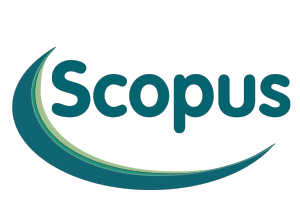آیا معیارهای اسکوپوس برای نمایه شدن مجلات ایرانی تغییر نموده است؟
تغییر معیارهای اسکوپوس و اعمال سختگیری های علمی بیشتر برای نمایه شدن در آن
در سالهای اخیر شرایط داوری مجلات در نمایه ساز اسکوپوس تاحدی تغییر نموده است بطوریکه برخی از مجلات کشورمان در این ارزشیابی موفق به احراز شرایط لازم نگردیده اند. با اهداف آموزشی برای سردبیران گرامی برخی از معیارهای ارزشیابی ذکر میگردند.
براساس نتایج بررسی های علمی مجلات برای نمایه سازی در پایگاه اسکوپوس در سال گذشته، متاسفانه تعدادی زیادی از مجلات با سابقه علمی خوب و قابل قبول کشورمان، موفق به اخذ پذیرش جهت نمایه سازی در این پایگاه نشده و با یک مهلت دو تا ۵ ساله برای ارتقا وضعیت علمی و کیفی خود مواجه شده اند. دلایل بیان شده در این خصوصاز سوی پایگاه اسکوپوس یکسری دلایل علمی و کیفی دقیق با استناد به نمونه هایی از مقالات منتشر شده در این مجلات بوده است.
چه معیارهای علمی در بررسی مجلات مطرح گردیده اند؟
• The title is one of a large number of similar titles globally
• It would be more informative if the journal were to be retitled “The Iranian Journal of…” (This occurs when there were a few international papers)
• The Journal is struggling for content, which is generally of a weak quality
• This journal to develop to an internationally competitive standard, sufficient to justify inclusion in SCOPUS
• If the Editors have international aspirations, then the Board would justify diversification beyond the Iranian diaspora to a much wider range of active members
• The senior editorial board is comprised entirely of members of “…” University (Means there are a few diversity of international editorial boards)
• This is primarily a local institutional journal, and this is reflected in the relatively low volume of articles and in the local quality of the articles
• It will take some time to develop the quality and to implement a strategic vision to lift it from an institutional to a truly national or international journal
• Not strong in terms of hypotheses, describe work of practical importance
• It difficult to evaluate the journal’s international profile as the readership is not clear and the citation rate is low
• Only 6 papers have received a single citation (understandably much self-citation) and in one case perhaps even evidence of article duplication
• The editorial board needs to work hard to get a broader readership
• The purpose of the journal might be expanded so it is possible for potential authors to get a better sense of the aims and scope
• Despite a “catch all” title and aims, this institutional journal is only publishing around 30 articles per annum
• The editorial board is entirely Iranian, and a journal with international aspirations would benefit from a more diverse editorial board
• It is not clear how the journal is funded
• The title is very weak and generic, in that it gives no clues to the geographic, institutional or regional origin of the journal
• The title does not distinguish between human health and non-human subject matter, which are conventionally separated into different academic publishing streams
• It is also difficult to validate some of the international content
• The large editorial board is taken largely from the host institution
• It is open access but it is not clear whether or not there is an author fee for publication
• Articles are published in English. The grammar in the abstracts could be improved
• The journal only publishes 2 issues a year with about 12 articles annually
• Articles vary in their scientific quality with some of good quality and others only marginal
• The journal is poorly cited. We would like to see many more citations
• We suggest that the editor try to be more selective in what is published
• The editor is of good standing but the editorial board is small and composed of mainly “country” orthodontists
• We would like to see an expanded board with a more diverse international representation
• It is a local “country” institutional journal, with a senior editorial board drawn entirely from the University
• It is clearly at this stage in its development a “”city name” Journal of …” rather than a truly international journal
• It will take some time for this journal to develop to an international standards in the volume and quality of content
• It is as yet only publishing around 17 articles with few original insights
• The title does not work well in English, and it can easily be confused with other pediatric journals
• The Editorial Board is almost entirely composed of local “country” academics and those drawn from the “country” diaspora, despite the stated global ambitions of the journal
• It is not clear from the website whether there are any publication charges
• On balance, it will take a considerable time to raise the standards and manuscript flow of this journal from a small institutional journal to one with original content and international impact such as would justify accession to SCOPUS
• This journal is publishing around 20 articles per annum of generally poor quality and minimal citation activity
• The editorial board is very large relative to the output of the journal, and would benefit from downsizing into a smaller, diverse and pro-active team
• It is one of a large number of similar small and parochial institutional journals which serve a local purpose but which are unlikely to become internationally competitive in a regional sector which would benefit from significant rationalisation and consolidation
• The journal is publishing around 27 articles per annum, with generally weak citation metrics and of limited originality and quality

دیدگاههای ثبت شده